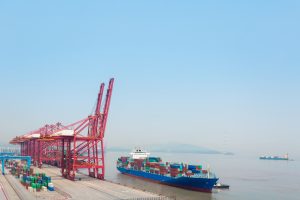The Diplomat author Mercy Kuo regularly engages subject-matter experts, policy practitioners and strategic thinkers across the globe for their diverse insights into U.S. Asia policy. This conversation with Henry Gao – professor of law at Singapore Management University and a WTO adviser – is the 411th in “The Trans-Pacific View Insight Series.”
Examine China’s efforts to construct an alternative trade system.
China’s pursuit of an alternative trade system manifests through various avenues.
Domestically, it underscores the state’s pivotal role, leveraging robust industrial policy and state-owned enterprises.
Regionally, China unveiled significant initiatives in 2013: the Silk Road Economic Belt, bridging China to Europe via the Eurasian Continent, and the 21st Century Maritime Silk Road, connecting China with Southeast Asia, Africa, and Europe via the Pacific and Indian oceans. These initiatives, later amalgamated as the Belt and Road Initiative (BRI), have become central to President Xi’s foreign policy.
Encompassing 65 countries across three continents and a population of 4.4 billion, the BRI reportedly represents 29 percent of global GDP and 23.4 percent of global merchandise and services exports. By aligning China’s interests with those of developing nations in Asia, Africa, and Latin America, the BRI facilitates the establishment of China’s supply chain without direct confrontation in the Pacific with the United States.
Globally, China emphasizes each nation’s right to choose its development path and tries to promote among developing countries its state-led growth model heavily relying on industrial subsidies and SOEs.
Identify the geopolitical factors driving China’s efforts.
China’s pursuit of an alternative trade system is primarily motivated by geopolitical factors, notably in response to U.S. initiatives aimed at excluding China from global supply chains. This is exemplified by provisions like the yarn-forwarding rule in the Trans-Pacific Partnership (TPP), which favored TPP member-sourced yarn, effectively excluding non-TPP members like China.
Additionally, the U.S.-China trade war and efforts to “decouple” from China, along with initiatives to address excess capacity and unfair trade practices, underscore the necessity for China to construct alternative avenues. In other words, China needs to find more stable source of supply of raw materials and explore new markets for its manufacturing products.
Analyze the correlation between the Belt and Road Initiative and Global South in China’s attempt to reconfigure the global trade system.
The Belt and Road Initiative seeks to reconfigure the global trade landscape by redirecting both export and import markets for the Global South. Traditionally, the Global South primarily exported raw materials to the West, and then used the foreign exchanges they earn this way to import manufactured goods from the West. However, the BRI aims to shift this dynamic, thus enabling Chinese firms to obtain raw materials, tap into new markets, and absorb surplus manufacturing capacities. This envisioned a hub-and-spoke system with China as its center hub and the Global South countries as spokes leading to China.
Evaluate China’s priority placed on bilateral and regional free trade agreements (FTA).
China’s emphasis on negotiating bilateral and regional FTAs is strategic, leveraging its considerable bargaining power as one of the largest trade partners globally. Partnering predominantly with resource-rich nations ensures stable supplies for Chinese firms.
In response to U.S.-led initiatives like the TPP [rebranded as the CPTPP after the U.S. withdrawal in 2017], China negotiated the Regional Comprehensive Economic Partnership (RCEP), featuring more liberal rules of origin. RCEP’s implementation amid U.S. absence from the CPTPP underscores China’s growing influence in the region.
Assess how a China-led alternative trade system would impact the United States and the West.
A China-led alternative trade system would significantly realign supply chains away from the West, centralizing them around China. This shift would make China the primary destination of exports and source of imports for the Global South.
Moreover, it could erode U.S. dominance, enticing more countries to pivot toward China. This is confirmed by recently released studies by the Singapore-based Institute of Southeast Asian Studies, which shows Southeast Asian countries favoring China over the U.S. as the partner for the first time.
Additionally, such a system could signal a transition from the Washington Consensus to the Beijing Consensus, prioritizing state-led economic models over laissez-faire approaches. In the long run, this could mark the end to the Western model based on free trade and free markets, and in turn reshapes the global geopolitical landscape.
































